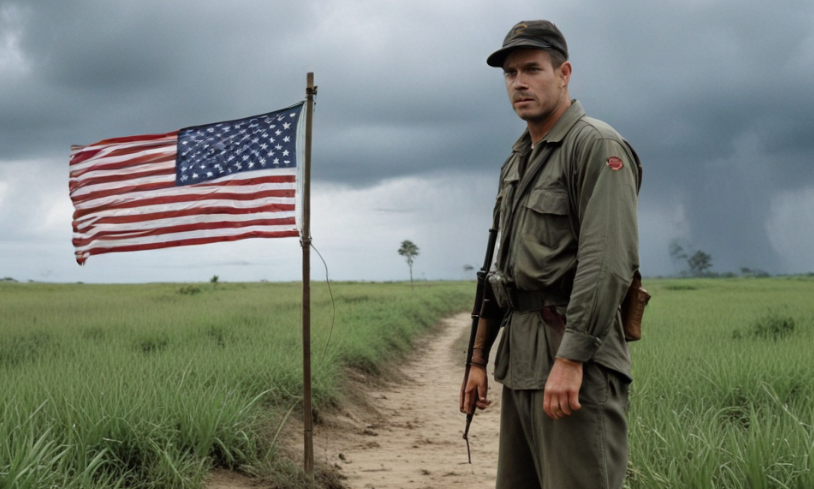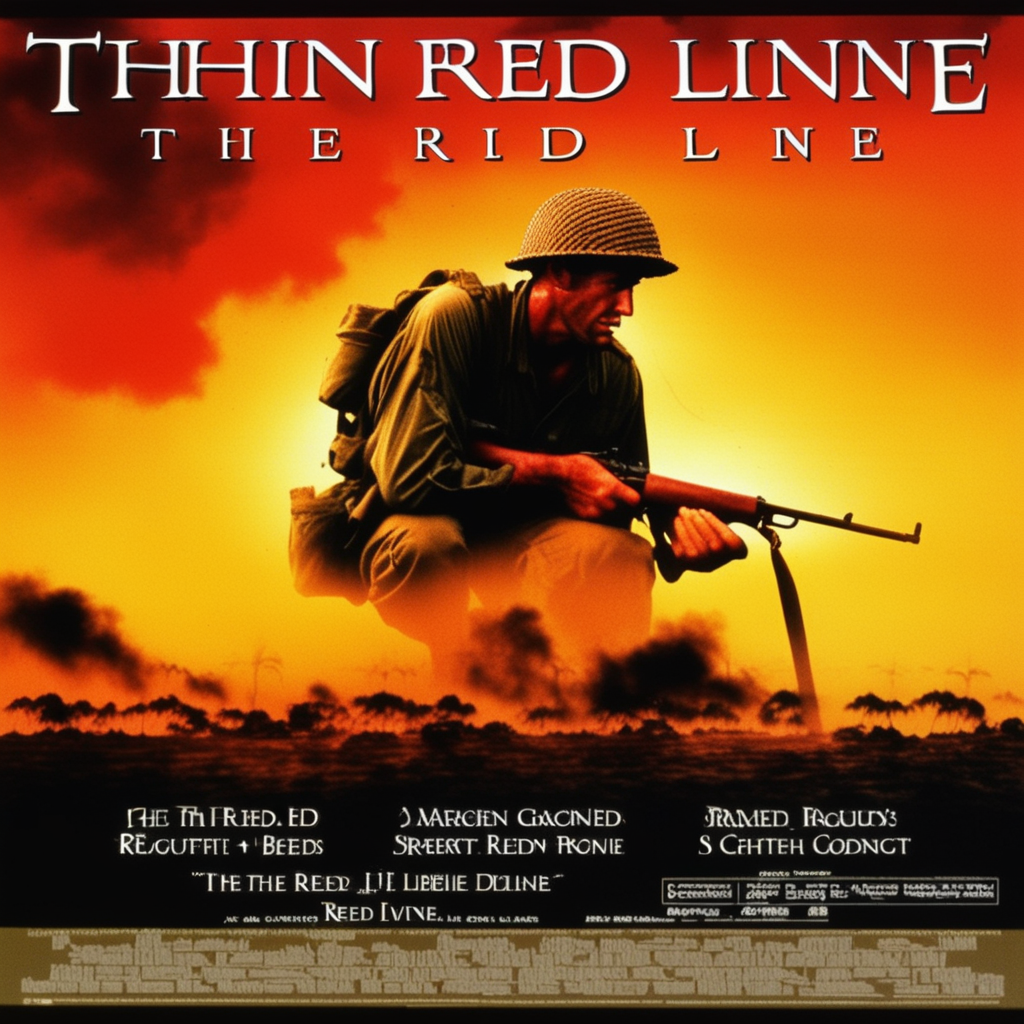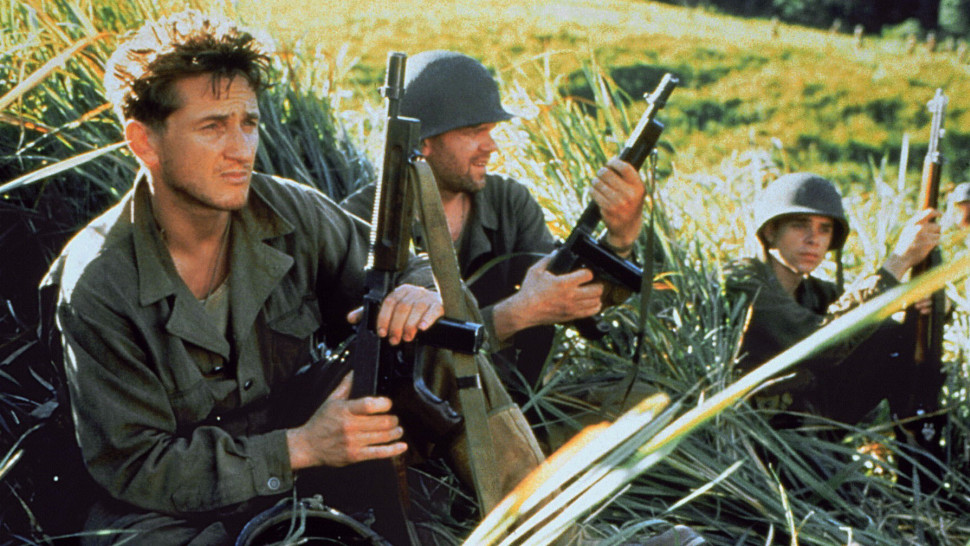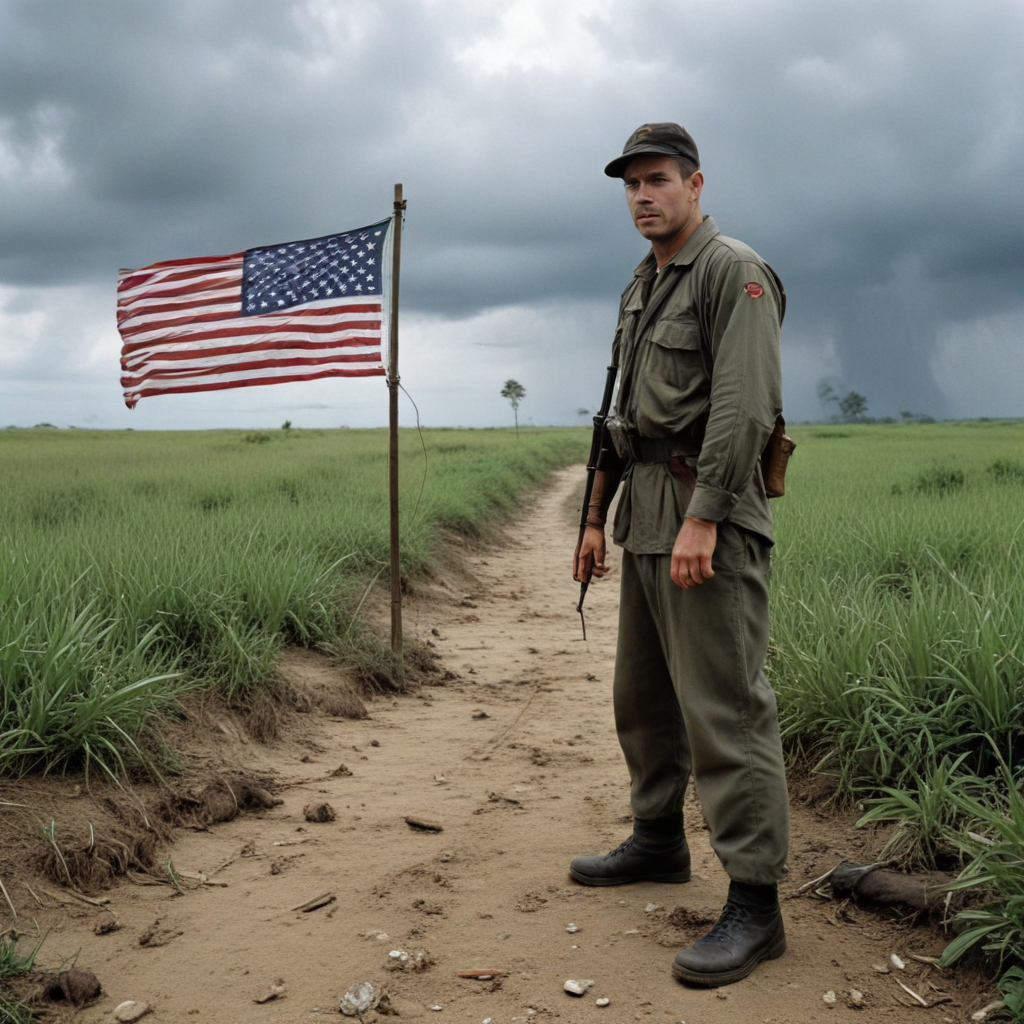The Thin Red Line (1998)
- music
- September 19, 2024

“The Thin Red Line” (1998) is a war drama directed by Terrence Malick, based on the 1962 novel of the same name by James Jones. Set during World War II, the film focuses on the Battle of Guadalcanal in the Pacific Theater, depicting the conflict between U.S. soldiers and Japanese forces. Unlike many traditional war films, The Thin Red Line is less concerned with action and more focused on philosophical reflections about life, death, nature, and the human experience in the midst of war.

The film follows a large ensemble cast of characters, with key performances by actors such as Sean Penn, Jim Caviezel, Nick Nolte, Elias Koteas, Ben Chaplin, and Adrien Brody. The story centers on C Company, a group of soldiers who are deployed to seize control of the Japanese-occupied island. Through these characters, the film explores the emotional and psychological toll of war, with each soldier grappling with their own fears, beliefs, and sense of morality.

One of the central figures is Private Witt (Jim Caviezel), a soldier who has gone AWOL and is found living peacefully among the native Melanesian people before being brought back to the front lines. Witt serves as the film’s moral and spiritual anchor, offering a counterpoint to the chaos and destruction around him. His inner reflections, along with those of other characters, are conveyed through voiceovers, a signature technique of director Terrence Malick.

“The Thin Red Line” is known for its poetic and meditative style, often juxtaposing the horrors of war with the beauty of nature. Malick’s direction emphasizes the contrast between the brutality of human conflict and the serene, indifferent landscapes in which it unfolds. Cinematographer John Toll’s work is widely praised, capturing stunning images of the lush Pacific scenery, while Hans Zimmer’s haunting score adds to the film’s emotional weight.
Unlike typical war movies, The Thin Red Line deconstructs the idea of heroism and focuses on the internal struggles of the soldiers rather than just the external battles they face. It raises existential questions about the nature of good and evil, the randomness of violence, and the search for meaning in a seemingly indifferent universe.

The film received critical acclaim for its ambitious storytelling and its deep, philosophical approach to the war genre. It was nominated for seven Academy Awards, including Best Picture and Best Director. Despite being released the same year as Steven Spielberg’s Saving Private Ryan, another major World War II film, The Thin Red Line distinguished itself with its more introspective and lyrical take on war.

In conclusion, The Thin Red Line is a visually stunning and thought-provoking film that explores the complexities of war, not just as a physical conflict but as a deeply personal and existential experience. Its contemplative style and philosophical underpinnings make it one of the most unique war films of its era.











